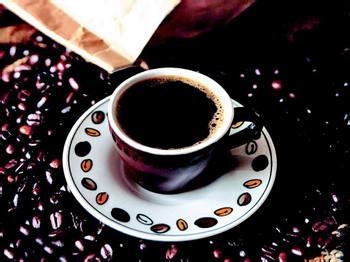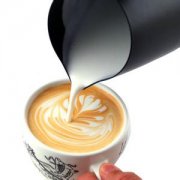Coffee culture common sense Paris cafe is like a bistro
The early cafes in Paris were typically run by poor Mediterranean coffee merchants, often by foreigners. As La Roque, the son of a Marseilles businessman, concluded, "Gentlemen and fashionistas are ashamed to go to such public places, where people smoke and drink smelly beer, and their coffee is not the best. Customers can't enjoy the most thoughtful service.

A significant change in cafes in Paris occurred in 1676. At that time, an Italian Procopia opened a shop at the annual Saint-Germain bazaar. He "sets off" the cafe with "tapestries, large mirrors, pictures, marble tables, many candles and other decorations" to attract more prestigious customers.
His success in the bazaar led him to replicate a more lasting storefront on Duhron Street. After 1686, Procopia Cafe in St. Germain de Forsyte was converted into a restaurant and introduced himself as the oldest cafe in the world. "with a better decorated room," Laroque commented, "there are gentlemen who come here for coffee and decent friends, and scholars and the most serious people do not avoid these gatherings."
France has strict license control over the drinks sold in various stores. Although the right to sell wine is limited to members of the wine guild, beer can be sold in many industries. The emergence of cafes in the early 1670s coincided with the advent of new wines, including brandy and fruit wine, which, like coffee, were used more as medicine.
In 1673, the king allowed the newly formed lemon company to sell coffee and all kinds of brandy. Three years later, the lemon merchants formed a guild with the winemakers and brandy merchants. Selling brandy is a lucrative business, and a stable market can be found quickly, forcing early cafe operators to move upmarket. This occasional shift in business rules has permanently changed the sociality of Parisian cafes.
From the beginning, the main commodity sold in French cafes was alcoholic beverages. Although coffee is nominally different from its competitors (bistro, bistro, cabaret), it is basically just a name. As many visitors to Paris will find, the cafe in Paris is not really a pure coffee-house.) .
When cafes spread all over Europe, their form and nature have changed in different social environments. In Britain, cafes are still dominated by men, focusing on giving people access to news, reading and writing, doing business and sniffing out rumors and news. Such cafes are especially suitable for all men in business, as well as priests, courtiers and critics. Although the London model was successful in North America, it did not become the mainstream model in Europe.
The French-style cafe is a mixture of cafes and taverns that attract many distinguished customers and are very influential in continental Europe, especially in Italy.
Important Notice :
前街咖啡 FrontStreet Coffee has moved to new addredd:
FrontStreet Coffee Address: 315,Donghua East Road,GuangZhou
Tel:020 38364473
- Prev

The British headquarters of the King's arm Cafe in North America
It was not until 1696 that New York had its first coffee shop. British immigrant John Hachen opened his own King's arm Cafe on Broadway. Hachen's cafe is modelled on the London Cafe model he knows. There is a large room upstairs, lined with tables covered with green tablecloths. Through the door, you can go to the balcony and enjoy the beautiful river view and wharf, which can make businessmen early.
- Next

History of Coffee Culture History of Vienna Cafe
In Rome, the most famous is the Graco Cafe, which opened in 1750. Traveling to continental Europe is an essential education for British aristocratic children, while Rome is the preferred destination. For the sake of art, a group of northern artists from Britain, Germany and Scandinavia work in this city. These painters, sculptors and antiquities researchers put Graco Cafe
Related
- How did the Salvadoran coffee industry develop in Central America?
- What exactly does the golden cup extraction of coffee mean?
- The Origin of Coffee flower
- [2023 Starbucks World Earth Day] there are more meaningful things besides free Starbucks coffee!
- What kind of coffee is there in Spain? 9 Flavors of Spanish Coffee
- Aromatic African coffee| Kenya's coffee culture and historical production area
- Liberica Coffee Bean knowledge: the characteristics of Liberian Coffee beans of the three original species of Coffee beans
- The origin and formula of Spanish latte introduces the taste characteristics of Bombon coffee in Valencia, Spain.
- How to adjust the solution of over-extracted coffee
- What is the tasting period of coffee beans? What is the period of coffee and beans? How should coffee wake up and raise beans?

